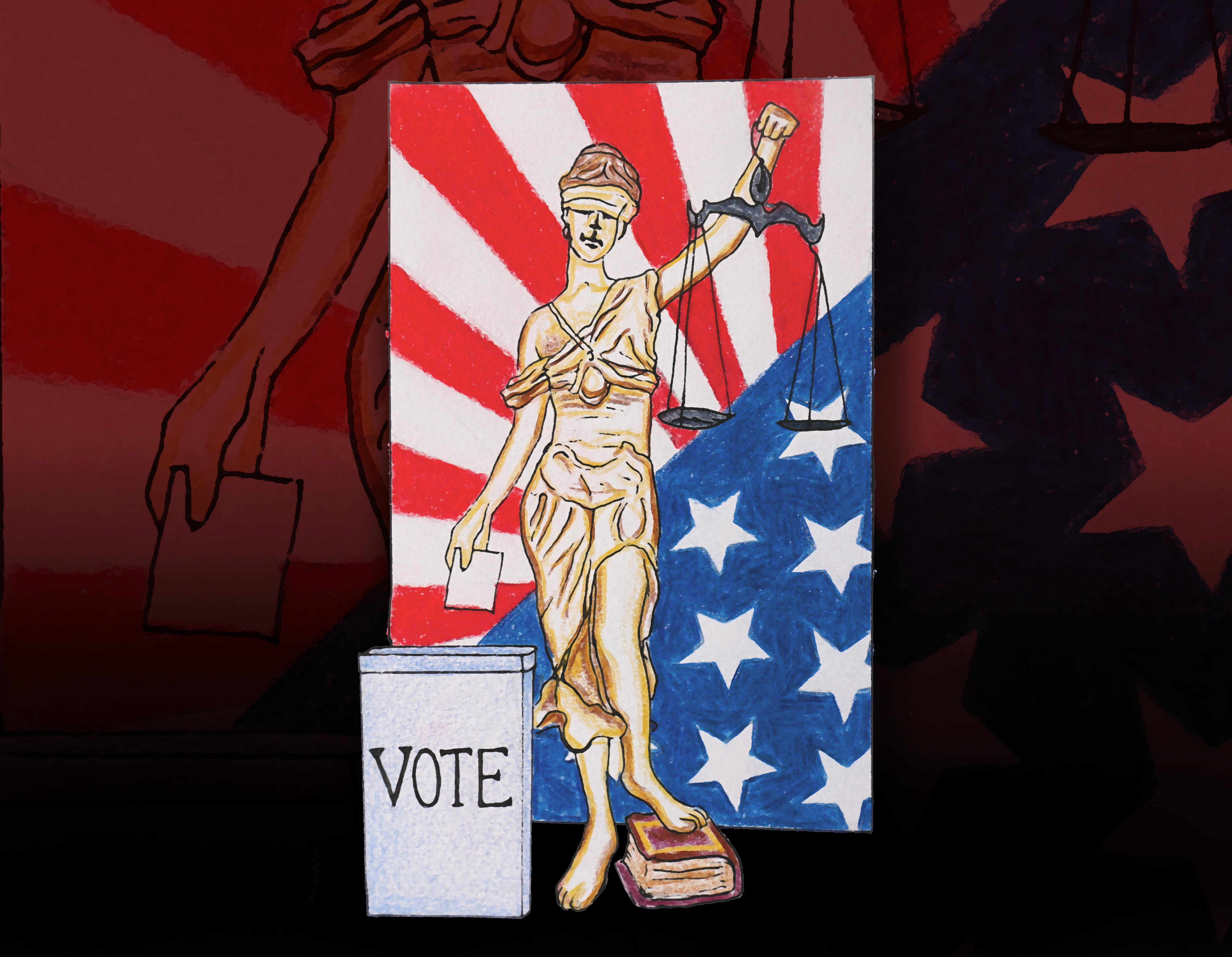Spring 2022. Pundits predicted a Republican red wave in the November midterm elections. As the opposition party, Republicans hoped to benefit from a historical trend of midterm voter backlash because of dissatisfaction with the status quo. But then the Supreme Court overturned Roe v. Wade in Dobbs v. Jackson Women’s Health Organization, and the right to abortion was no longer federally protected.
Since the Dobbs decision was released, voter registration of young female Democrats has surged. This rise in registration has already impacted electoral outcomes; in an August Kansas referendum, where female voters make up two-thirds of new registrations, voters have already rejected a proposed change to the state constitution that would have removed protections for abortion.
Most polling as of Oct. 5 shows that the Democrats are slightly favored to keep a hold of the Senate, and that Republicans are slightly favored to take the House. This is a shift from polling earlier in the year that predicted that Republicans would take both. But polls aren’t predictive tools—they are a snapshot of current voter mindsets.
“I think Dobbs has had a huge effect on what the midterms will look like. I feel like right now it looks like it’s anyone’s midterm,” Robin Huang (SFS ’23), the content director of the GU Politics Fly on the Wall podcast, said. Dobbs has given the Democrats a way to make this election competitive again.
Lauryn Ping (COL ’23), the vice president of H*yas For Choice, similarly views abortion as a motivating issue for voters in this year’s midterm elections especially.
“There’s such a large majority of people who support the right to abortion, and I think that goes across parties,” Ping said.
However, whether this momentum will translate into the turnout Democrats need to keep the House and Senate, and flip state legislatures, remains to be seen.
Abortion is an issue that has compounded independent and swing voters’ growing doubts about intensifying radicalism and voter fraud claims in the Republican party. Persuading those voters and controlling the national narrative in the remaining weeks is key. For Democrats, this means focusing voters’ attention on the Republicans’ issues and converting registrations to turnout. For Republicans, reviving the red wave means foregrounding other issues such as current inflation rates.
According to Matteo Caulfield (COL ’23), former president of the GU Bipartisan Coalition (GBC), co-director for the Cardinal O’Connor Conference on Life, and a pro-life moderate Republican, abortion will not be the deciding factor for many swing voters.
“Americans want to put food on their table, and that requires tackling inflation, that requires getting oil prices down, that requires passing policies that enable people to be independent, instead of dependent on government, and I think that Democrats are not doing that,” Caulfield said.
Caulfield feels President Biden and congressional Democrats have failed to introduce policies that would remedy current economic issues, and this failure will be in the Republicans’ favor when voters cast their ballots.
Beyond specific issues, the shifting political dynamics of a post-Trump political landscape—including mainstream extremism and an increasingly fragile democracy—will certainly impact midterm races.
Sanjay Gospodinov (MSB ’23), former director of GBC’s media platform, The Consensus, and a libertarian pro-choice member of the GU Politics student advisory board, sees candidate quality as a leading factor in voter’s decisions—especially now as it’s become increasingly popular for celebrities to run for office.
“We really are running candidates we would never have run, ever, ten years ago,” he said, referring to Mehmet Oz, a pseudoscientist-turned-politician running for the Republican party in the Pennsylvania senate race.
“That race with standard Republican, standard Dem—standard Republican wins nine times out of 10, but not now,” Gospodinov said, emphasizing how increasingly extreme candidates have affected the calculus of previously uncompetitive elections.
That mainstreaming of previously fringe factions of the Republican party might still sway swing voters away from Republican candidates—and Dobbs could be the nail in the coffin, especially in state and local elections.
Pew Research found that 57 percent of young Republican women oppose the Dobbs decision and that 45 percent of Republican voters aged 18-29 disagree with their party’s position on abortion. A memorandum from the RNC released in mid-September found that 80 percent of voters are unhappy with the Dobbs decision.
“I think the Dobbs decision really demonstrates the consequences of a Republican legislature, and just the Republican party in general, propping up an anti-abortion stance,” Ping said.
This broad support for abortion access has made failures in Democratic party strategy on a state level apparent to many voters. The Republican party has historically invested more in state legislatures and local races, and ultimately it is those representatives who will decide how far the pro-life movement can move toward enacting total bans on abortion.
For success, the Democratic party needs to engage in the same long-term, state- and local-level strategies that the Republicans have engaged in if it wants to protect abortion rights in the future.
In the short term, Huang identifies a new trend in Democratic strategy.
“There’s been a new focus on organizing in the Democratic Party. Stacey Abrams comes to mind,” Huang said, alluding to Abrams’ success with local, grassroots organizing in Georgia that influenced the outcome of the 2020 election. “I think that’s ultimately a winning strategy.”
But in the context of recent attempts at voter suppression, a strategy reliant on organizing and turnout, rather than that of redistricting and long-term legislature investment, may still not be enogh for Democrats to win. The simple math of the freshly gerrymandered electoral map, combined with general electoral trends of dissatisfaction with the president and the Democratic party, could largely favor Republicans.
There is much to distract voters from the aftermath of the Dobbs decision—the economy, the theater of extremist candidates in House and Senate races, voter suppression, and countless other issues. It’s not clear whether abortion will remain in the public consciousness by the time the election rolls around, and if it does, whether Democrats will be able to harness its effect.
“Either party will have to fight to keep Dobbs as a mainline issue—if they want it to be,” Huang said.






when’s the last time anyone interviewed here talked to a voter? what is there to actually learn from this piece? maybe it’s meant to be about student organizing efforts, but it reads like a collection of armchair campaign managers / aspiring pundits talking in a bubble
this is a feature too??